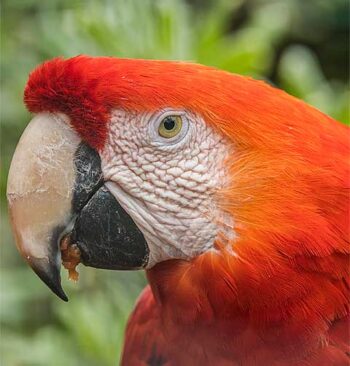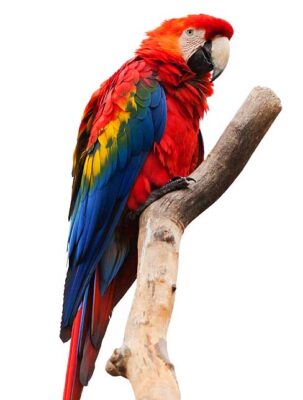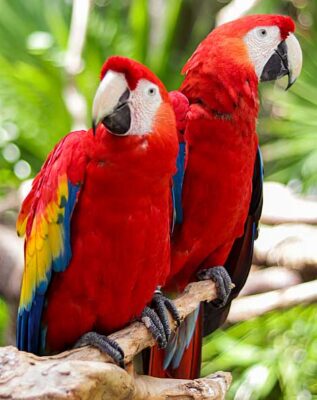Scarlet Macaw – Vibrant Plumage, Tropical Noise-Maker

The scarlet macaw is native to South America. The species once had a large habitat to call home, including subtropical rainforests and savannah areas of Central and South America. Over the last couple of hundred years, the natural population has dropped severely, due to hunting, poaching, deforestation and the use of pesticides for cash crops. However, there is very little danger of extinction, due to the popularity of scarlet macaws as pets. The main reason they are so sought after, is due to their bright characteristic plumage. Their tail feathers are light blue and yellow while the main body feathers are scarlet red. And then the very ends of the tail feathers are light blue, and the tail flight feathers are dark red, with a gold shine. What vibrant flamboyance!
Other qualities that are known to be endearing to owners is that they are playful and active birds. They are also very social and enjoy interacting with their owners and other birds. They enjoy playing with toys and climbing on perches and even trained to do some tricks, such as retrieving things or repeating simple phrases. Overall, they are very intelligent, curious and playful birds. On the flip side though as pets, they can be temperamental and messy, and require a fair amount of training, before becoming manageable in the house.
Physical Characteristics
Adult and young scarlet macaws look the same, the only way to tell them apart is by the color of their eyes: older adults have yellow eyes, while young birds have dark eyes. They can grow to be about 32 inches in length, half of that length being due to the long, slender tail. They have the same toe configuration as other macaws do: two toes face forward, and one faces back. This makes it easy for them to climb and perch in trees and to grasp food.

Their beaks are large and curved, and quite powerful, making them well-equipped for survival in the jungle. The beak is light in color on the top while black on the bottom. Scarlet macaws produce a very loud call, which can carry for miles, enabling them to locate and identify their groups.

Breeding, Diet and Behavior
In the wild, they lay two or three eggs at a time, in tree hollows. After five weeks the little birds break out of their eggs and the young can leave the nest after three months. They can live on their own after a year. Wild scarlet macaws live for 20 to 30 years, and those in captivity, can live up to 50 years easily and some say even sometimes individuals have lived to be 80-90 years old.
They mainly eat nuts, seeds and fruit, as well as nectar from flower buds.
